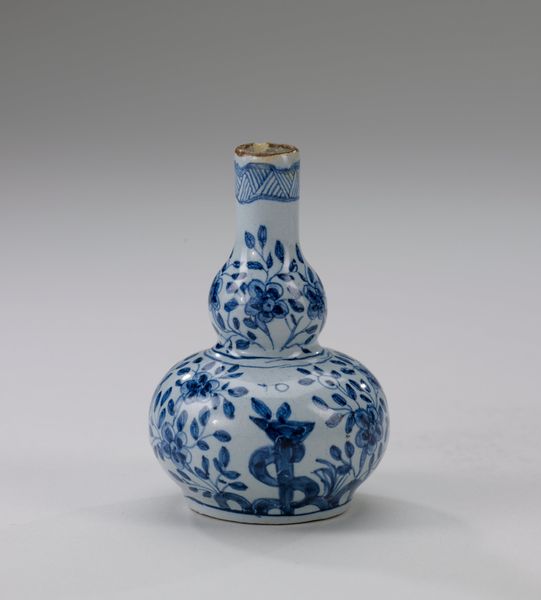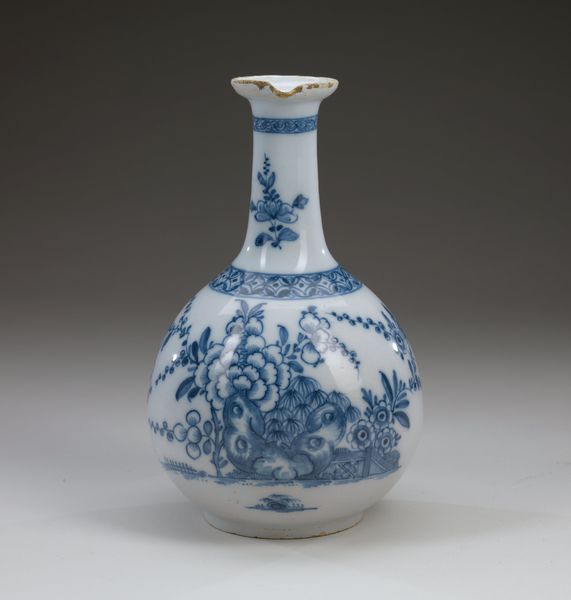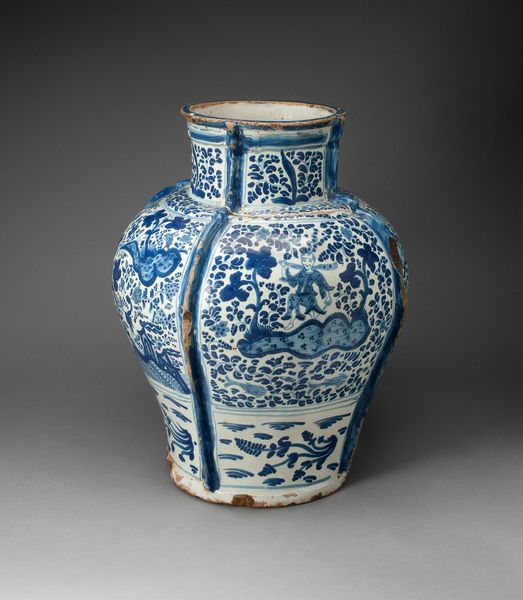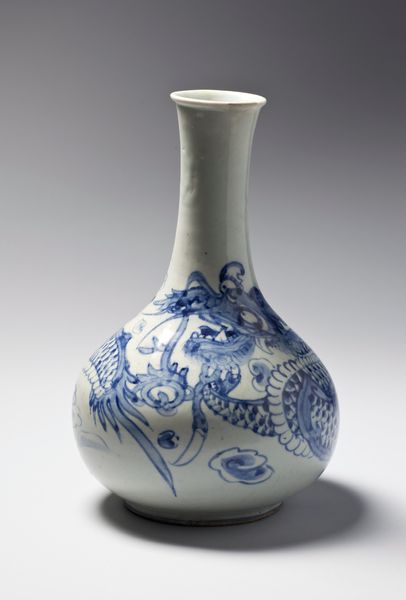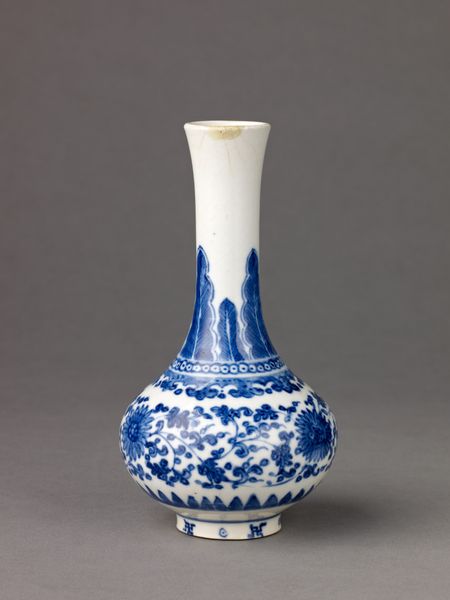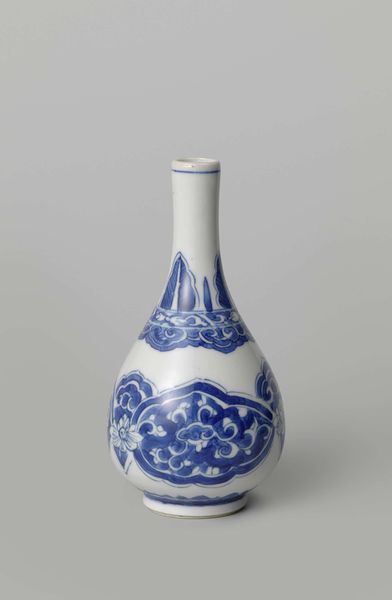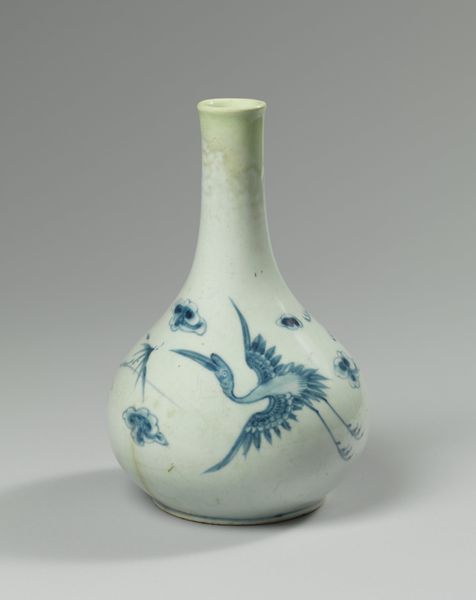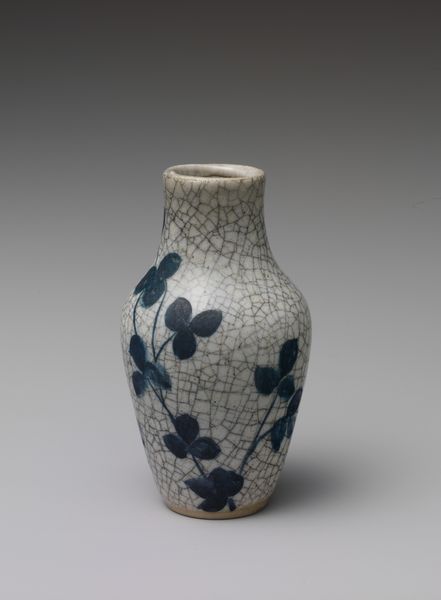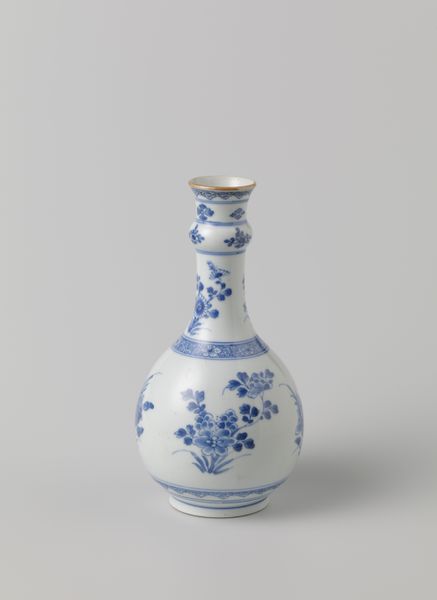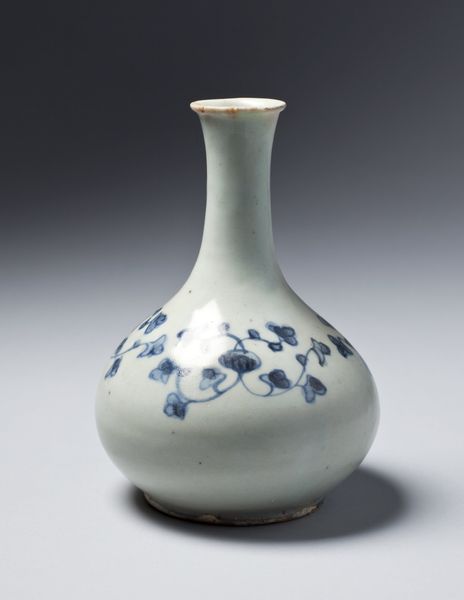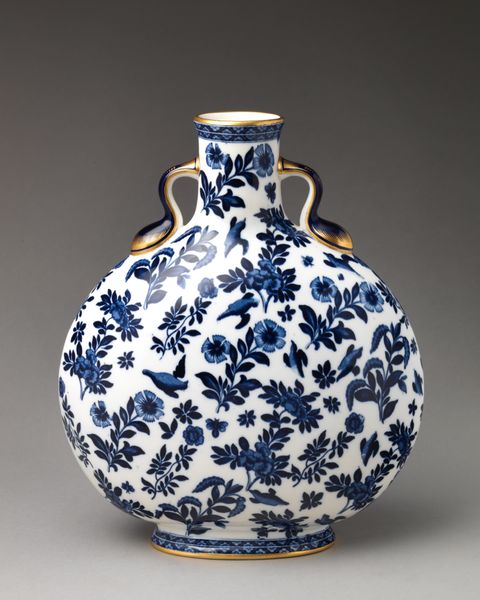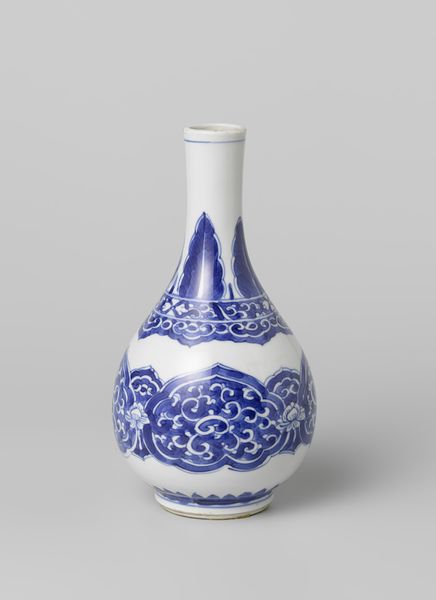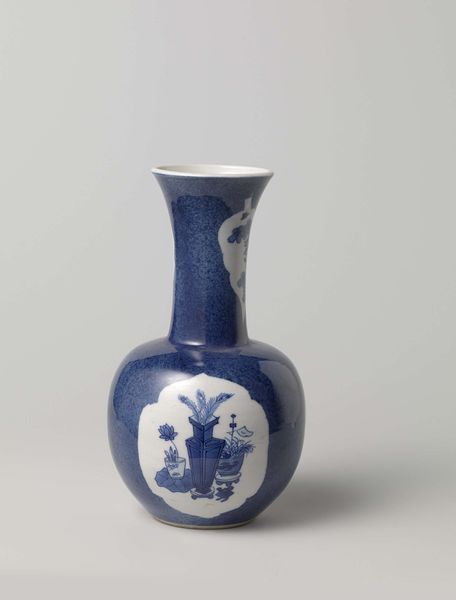
ceramic
asian-art
ceramic
ceramic
decorative-art
Dimensions: 3 1/8 x 2 1/8 x 3 1/8 in. (7.94 x 5.4 x 7.94 cm)
Copyright: Public Domain
Curator: This "Covered Jar", likely from around 1720, is currently located here at the Minneapolis Institute of Art. Editor: Well, first impression—the glaze work is so delicate! I'm immediately drawn to how the artist balanced the bold cobalt against the stark white of the porcelain. It gives the piece an airy quality, don't you think? Curator: Absolutely. Its delicate aesthetic speaks to the rise of export porcelain during the Qing Dynasty. These weren't just functional objects; they became symbols of status, both within China and abroad. Aristocrats would acquire pieces like this to showcase refined tastes. Editor: Looking at the structure, there is something inherently playful in that gourd-like double-bulb shape. The flowers wrapping around the piece provide a pleasant asymmetry, even though the rendering is fairly conventional. Curator: Precisely, although these conventions carry substantial cultural weight. Notice the specific flower types? This is highly stylized imagery linked to classical motifs within the literati circles and scholar gardens of the era, expressing very specific auspicious symbolism. Its decorative use reinforces the political and intellectual position of the person who owned it. Editor: Do you think the craftsmanship might point to the rise of certain porcelain workshops, which could shed more light on these aristocratic circles? I am especially interested in how the repeated floral motif accentuates the spherical quality of each of the bulbous sections. Curator: I agree, by considering which kilns were commissioned most frequently we might get an interesting indication of how art production and consumption went hand-in-hand to boost cultural authority. What is quite amazing to consider is how these objects ended up signifying prestige far beyond China’s borders. Editor: I never really looked at porcelain this way before! Curator: Likewise. Thinking about this particular "Covered Jar," it shows how seemingly simple art can encapsulate broad historical contexts and profound aesthetic appreciation.
Comments
No comments
Be the first to comment and join the conversation on the ultimate creative platform.
